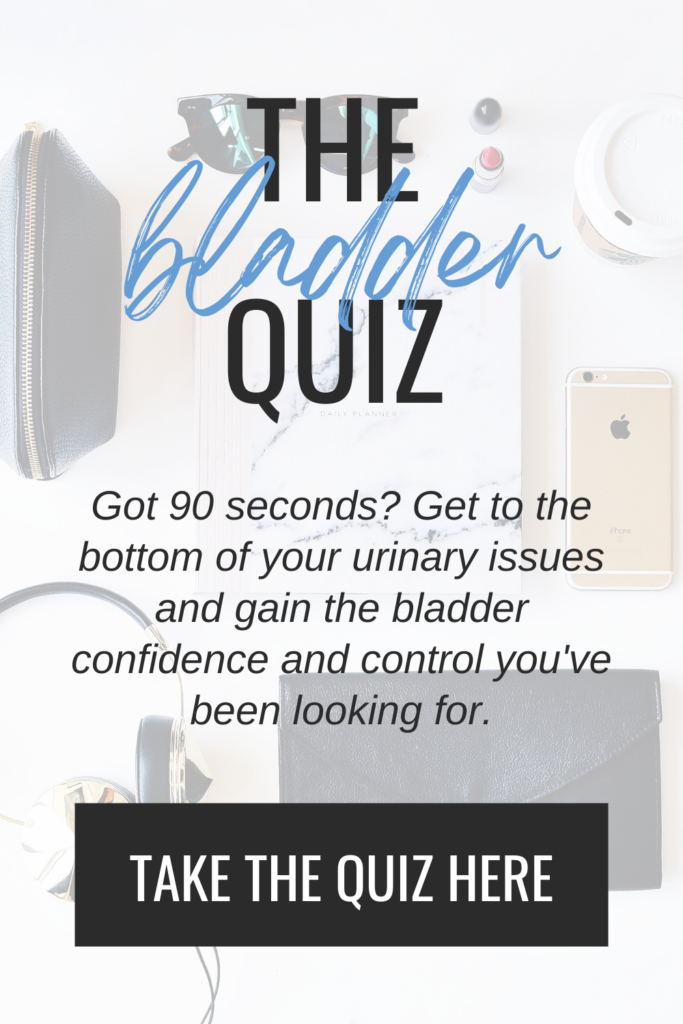“How much water are you drinking?” is one of the first questions I ask when sitting down with a new pelvic rehab patient (after hearing their medical history and pelvic health story, of course). Not because I think water can magically fix incontinence, pain with intercourse, musculoskeletal issues, or prolapse, but because it’s an underrated and often missed piece of the puzzle to all of the above.
Drinking water is one of the cheapest and most easily accessible things we can do for our health. Period. Not just pelvic health (which I’m beyond excited to get into here), but health health in general— full body, head to toe, mental, physical, and emotional health are all driven and affected by water, and if your body isn’t well hydrated, you can expect to see the side effects.
Because water-drinking habits are discussed on day one of my patient’s pelvic health journey, it’s also one of the first places I recommend they address to see progres. Do I get eye rolls? Yes…because people expect earth shattering treatments for the bowel, bladder, and sexual problems they’ve been having for years. [Water can’t possibly be the answer.]
And they’re right…water is rarely theeeeee answer to pelvic health, but it is a necessary check box that needs to be filled so everything else can heal from there. No matter how fancy the treatments get, we’ll eventually hit a roadblock every time if the body isn’t properly hydrated.
Need a little more convincing? I’ve made a list of 5 (big) ways that your pelvic floor needs water to function optimally. Then make sure to keep reading for my best tips on how to drink water properly so that you’re getting the most out of your hydrating efforts.
1. Bowel Health
You might be surprised to learn that constipation can be one of the main causes of pelvic pain, bladder issues, hemorrhoids, prolapse…I could go on. And beyond what you eat and how you sit on the toilet, the amount of water you drink can greatly affect your stool frequency and consistency.
PS- One of my other favorite, life-changing things to teach besides water drinking is how to poop properly. Seriously…trust me on this one. If you have constipation and need a little help with number two, this guide is all you need to start seeing improvement.
As bowel moves through your intestines, water and nutrients are absorbed back into the body systems. If you aren’t drinking enough water and start the whole digestion process with less than adequate water in your gut, by the time that stool makes it to the end, it’s going to be harder.
Drinking more water is an easy way to improve your stool consistency and help it optimally move through your intestines for poops that are more regular and comfortable.
2. Natural Lubrication
There are maaaaany things that can cause a lack of natural vaginal lubrication with arousal and intercourse, but out of everything it could be, hydration is the easiest issue to troubleshoot first. If your body is dehydrated, the last place it’s going to send fluid is your vagina when the heart, brain, lungs, muscles, etc. are begging for a little more liquid.
Not only does increasing your water intake give your body more to work with when delegating where to direct your H2O, but your vulvar skin will be happier, hormones will flow and function better, and the entire [vagina situation] will just be a healthier place.
3. Bladder Function
The bladder is a sore subject for many as one in three women deal with urinary problems like leakage, frequency, and urgency. Many try to reduce their bathroom trips or avoid accidents by limiting their water intake, but believe it or not, these issues can be a subtle cry from the bladder asking for [more] water.
Waste and byproduct from the kidneys filter into the bladder and make it an acidic environment. If this isn’t balanced with good ol’ H2O, the bladder will become too acidic and irritation will occur. The bladder will then look for any and every opportunity to get the acidic urine out, which leads to urgency, frequency, and leakage. Crazy, right?
Drinking enough water to keep your bladder happy but not too much to aggravate it is the first step in fixing bladder issues, and you’ll see my guide to finding that magic, “just right” number by scrolling a just a bit further. And if you’d like my step-by-step game plan for all things bladder, I have an entire course on addressing urinary issues that you can find here.
4. Period cramps
Cramping with menstruation is considered just one of the many joys of being a woman, but I’m here to tell you that periods don’t have to be (and honestly, shouldn’t be) painful. While the uterus has to contract to get rid of the endometrial lining every month, these are small contractions and should be virtually undetectable.
While tight pelvic floor muscles and diseases like endometriosis or PCOS can cause painful periods, a lack of water and underlying poor muscle health can also contribute. We all know that exercising without drinking enough water causes muscle cramps, right? The same can be said for dehydrated pelvic muscles and organs in the case of more severe cramping and secondary pain with menstruation too.
5. Fascia mobility
Fascia is a fluid-filled fibrous structure that sits below the skin and fat but above the muscle and helps the layers of the body slide and glide on top of one another. If this layer becomes sticky and fibrotic, which can happen due to limited hydration, poor mobility will occur and result in pain.
Low back pain, hip pain, pelvic pain, and abdominal pain can all come from limited fascial mobility, and making sure you get enough water is yet again a great place to start to make sure you’re giving your body what it needs to function properly.
And now for the water drinking tips-
The “right” way to consume water involves everything from how much you drink it, when and how you drink it, to maaaaybe even what you add to your water to get the most out of it. Everyone’s needs are different and my goal is to help you decide what’s best for you here.
First, the amount you drink should be based off of your body weight, environment, and activity level.
- Drink half of your body weight (in pounds) in ounces of water. For example, if someone weighs 150 pounds, they should be drinking about 75 ounces of water per day.
- Consume more like two thirds of your your body weight (in pounds) in ounces of water if you’re pregnant, breastfeeding, living at higher altitudes, in warmer climates, or are exercising vigorously regularly.
- If you do the math and find that you’re not drinking enough, don’t jump to your water drinking goal amount tomorrow. Large and sudden increases in water consumption can actually “shock” the body and especially affect the bladder. Instead, slowly increase how much you’re drinking by about 10 ounces a week until you get to your target amount.
How you drink your water can also make a big difference. Drink steadily and regularly throughout the day, limiting the need to take in large amounts at any one time; anywhere from 5-10 ounces of water per hour usually adds up to that half of body weight amount for most. (Adjust accordingly by looking at how many hours you’re awake— divide half of your body weight by how many hours you’re awake and you’ll find about how much water you should be drinking per hour.) A water bottle with measurement marks on the side makes this a breeze and I’ve linked the one I personally use here.
What to count as “water” is often the next question I get from my patients. And while I’d love to say that drinking pure, plain H2O is best, we can realistically include more things. Tea, coffee, kombucha, sparkling water, and even juice can count towards your water drinking efforts, but two thirds of your total goal amount should be coming from plain, pure water.
It’s also totally fine to add things to you water to make it a little more enjoyable. Lemon, cucumber, berries, and mint are all great options. For a little extra help with electrolyte balance, I also find success with throwing in pink Himalayan salt and chia seeds. For an even easier [but just as clean] alternative, LMNT has become a daily thing in the Davis house.
When consuming anything other than plain water, be aware that acidic foods (lemon, oranges, limes), carbonated drinks, sugar, and caffeine are all potential bladder irritants and can make bladder symptoms worse. If you notice increased urinary urgency, frequency, or leakage more with your water substitute, it may be a contributor to your bladder issues.
The body is primarily made up of water; therefore, it’s no surprise that our systems need hydration to function. But the simple act of drinking water takes a bit of mindfulness if you want to do it right and acquire all the benefits.
If you gained a few pointers here but don’t know where to start, I recommend taking a day to inventory where you are in your water-drinking amount (like…literally write down everything you drink and how much and crunch some numbers at the end of the day), calculate where you want to be, and start working towards that goal ten ounces at a time. Nothing motivates my hydration efforts like a cute new water bottle, so that would be my step number two *wink wink*.
While cheers-ing with a glass of water feels lame compared to an iced chair or spicy marg, today my cup is filled to the brim with the finest of H2O and I’m raising my glass to you. Cheers to you and your health, one glass at a time.
– Amanda
Disclaimer: The content provided here does not constitute medical advice, nor is it a substitute for personalized healthcare. If you have concerns about a medical condition, diagnosis, or treatment, you should consult with a licensed healthcare professional.
Disclosure: Some of the links above are affiliate links, meaning, at no additional cost to you, I will earn a commission if you click through and make a purchase. No pressure, but I have a feeling you’re gonna like what I’ve taken the time to put my recommendation behind.

















